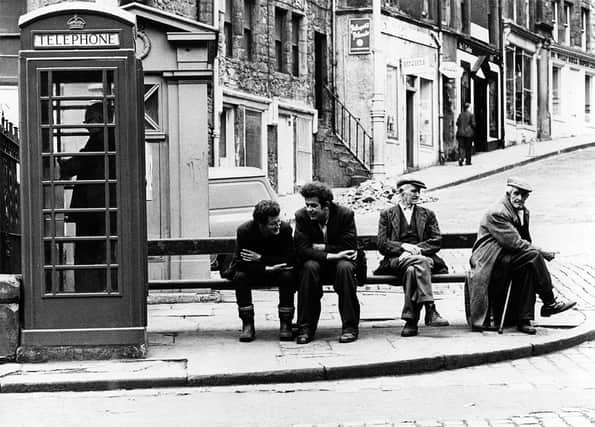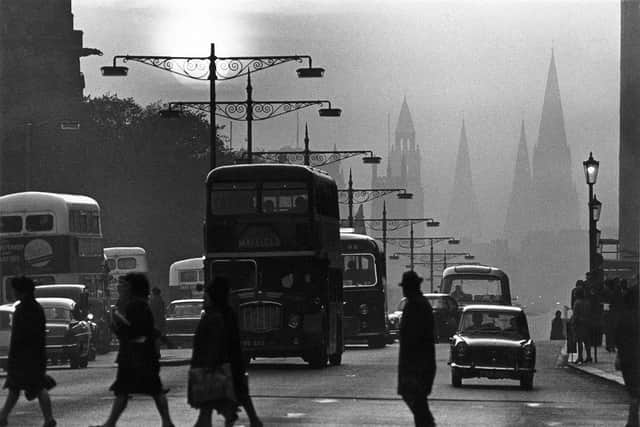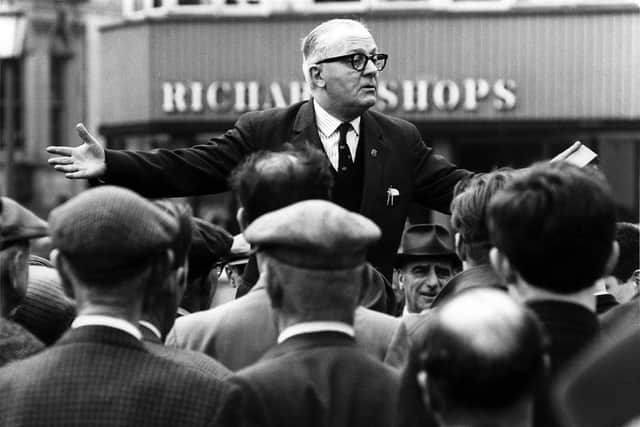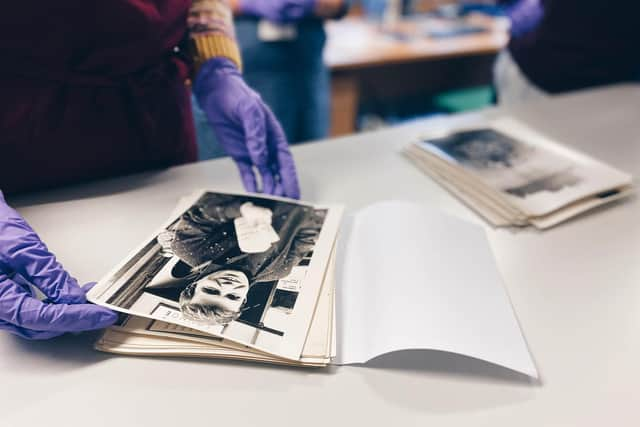Archive of Edinburgh street photographer unknown for decades gets permanent home in the city


Robert Blomfield’s images were never seen in public and he was completely unknown until he was honoured with an exhibition more than half a century later – nearly 20 years after hanging up his camera in the wake of a stroke.
Robert Blomfield passed away last December at the age of 82, just two years after his work was showcased for the first time.
Advertisement
Hide AdAdvertisement
Hide AdBut now his images of everyday life, including candid portraits and group shots, children playing amongst crumbling tenements, public gatherings, student life and the city’s evolving architecture - are set to be showcased permanently after being secured for the nation.


Blomfield’s family, who spent years cataloguing and digitising more than 1000 photographs previously stored away in cardboard boxes, has secured a home for his work at Edinburgh University, where he studied medicine after arriving in the city in 1956 when he was 18.
Blomfield was said to have carried his camera with him wherever he went in in Edinburgh, doing all of his own developing and printing at home in makeshift darkrooms in his various student flats.
The combination of an engaging manner and healthy disrespect for authority allowed him to get close to a myriad of subjects, taking photographs that were in turn tender, bold and humorous.
His work is also said to be crucial in capturing some of the large public gatherings staged in Edinburgh in the 1950s and 1960s, as well as the changing face of the city as new architecture emerged.


Daryl Green, head of special collections at the university, said: “The bulk of Blomfield’s early work focuses on his time in Edinburgh into the late 1960s – a period in which the city was undergoing momentous change.
“Through his lens we see the last breaths of the Old Town before modernisation took hold, we see the Forth Road Bridge reaching across the Forth, we meet his fellow students and medics, children on the street, shopkeepers, public speakers and feel the vibrancy of a city on the brink of change.”
Advertisement
Hide AdAdvertisement
Hide AdThe university has pledged to share his work with the “widest possible audience,” starting with a major new exhibition showing the archive, which will open to the public at its main library gallery in May.
Mr Green said: “The family has deposited this collection with the university for safekeeping and to ensure the widest possible access within safe conditions can be achieved.


"We will be running a few initial projects to clean and conserve the physical collections, and to describe them fully and will be fundraising for this work in the near future.
“A good deal of Robert’s enlargements have been scanned, and it is our intention to make these publicly available by the time the exhibition launches in May on our digital collections site.”Blomfield, who spent a decade in Edinburgh. would go on to work on street photography across the UK through to the early 1970s.
But his medical career meant his vast collection of images remained hidden away at home. It was only after a stroke in 1999 that his wife jane started the huge task of cataloguing and digitising his work.
After she passed away in 2011, Blomfield’s three sons William, Edward and George, along with his brother Johnny, continued the family’s labour of love.


Will Blomfield, the photographer’s eldest son, said: “We're absolutely delighted to be able to make this deposit to the university.
Advertisement
Hide AdAdvertisement
Hide Ad"Edinburgh and its people always held a special place in dad's heart, and he would be thrilled that his photographs have found such an appropriate home."
Mr Green added: “The fact that Robert’s work remained relatively unknown for almost 60 years is astounding to me.
“In his work, we sense echoes of earlier street photographers like Eugène Atget and Henri Cartier-Bresson, and we can discern the rich attachment to place that we see in contemporaries such as Robert Frank and William Klein.
"Blomfield is Edinburgh’s quiet answer to Glasgow’s Oscar Marzaroli, to Paris’s Brassaï, and the archive that the family has entrusted his work to the university provides a rich and complex record of how he developed his eye and his skills in the darkroom.
"We are very excited to share Robert’s work with the widest possible audience."


Blomfield only came to public prominence in 2018 when the City Art Centre agreed to host a four-month exhibition of more than 60 of his images.
They included children playing inside a tyre, two women captured with chickens at their feet, couples strolling through Princes Street Gardens after dark, and Edinburgh University students drinking coffee at their union building, and police officers observing the aftermath of an accident on Queen Street.
Advertisement
Hide AdAdvertisement
Hide AdThe exhibiton, which was staged to coincide with Blomfield’s 80th birthday, was accompanied by a book and a documentary.
The City Art Centre hailed the show as a collection of previously unseen "vintage street photography.” When it was announced, Blomfield it as "a personal view of life on its streets during the 1960s.”
He said at the time: “After 50 years, I’m thrilled to be able to share some of my pictures with the wider world. Edinburgh is a city that remains close to my heart, and the interaction of its residents with this most dramatic of urban stages provided me with endless inspiration as a young photographer.”
After Blomfield’s death in December 2020, Margaret Findlay, learning and public programmes manager at the City Art Centre, said: "Never before have I seen a group of strangers in a gallery bond in front of works of art and leave with shared memories and experiences. It was a joy to see the response and love there was for Robert and his work."
Comments
Want to join the conversation? Please or to comment on this article.
